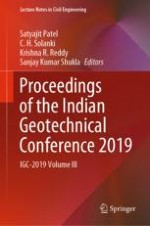2021 | OriginalPaper | Chapter
Experimental Investigation of Silty Soil Treated with Sodium Lignosulfonate
Authors : Abhijeet Gupta, Awdhesh K. Choudhary, Anil K. Choudhary
Published in: Proceedings of the Indian Geotechnical Conference 2019
Publisher: Springer Singapore
Activate our intelligent search to find suitable subject content or patents.
Select sections of text to find matching patents with Artificial Intelligence. powered by
Select sections of text to find additional relevant content using AI-assisted search. powered by
